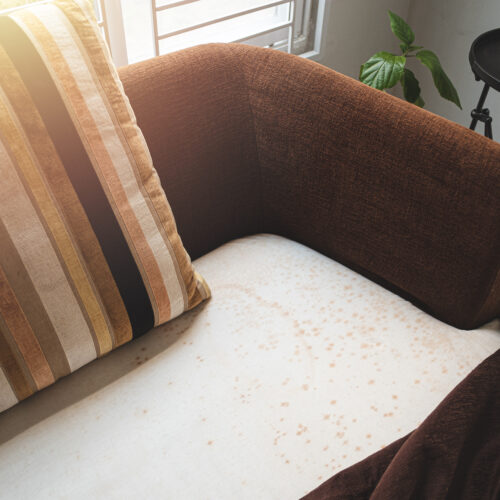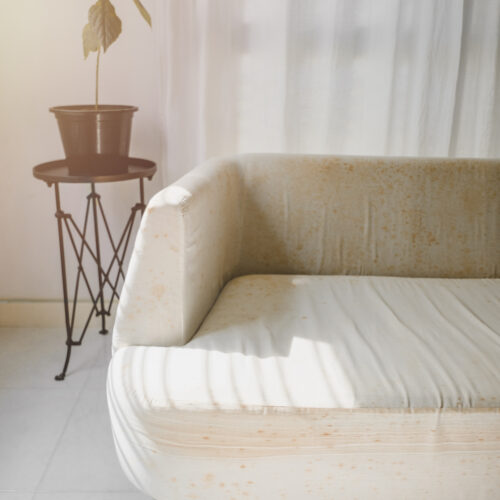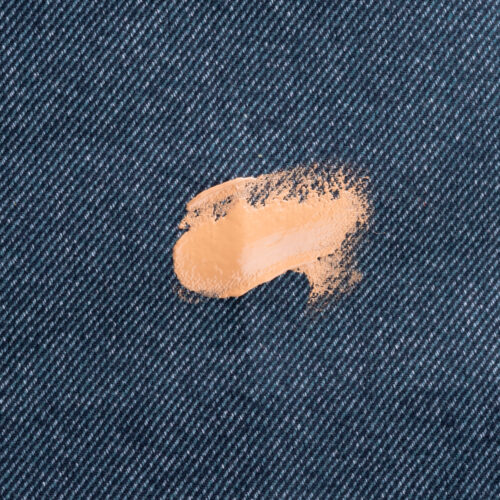January 14th, 2021 | Stone & Tile
Oil stains are an unsightly addition to any porous surface.
Whether it be concrete, natural stone or other sensitive surfaces, oils stains, if not treated quickly, can be very difficult to remove. Removing oil stains is tricky for a number of reasons. One of these reasons is that oils and fuels typically have very low surface tension. This enables them to penetrate quickly and deeply into porous substrates like stone and concrete.
Oils are also typically hydrophobic in nature and are not miscible in water. This means that they will not mix with water. The reason we make a point of this is to show that no amount of water blasting is going to help when it comes to removing oil stains. Having said this it is possible that water blasting can force oils further into the stone.
Removing the oil
There are 3 options for effective oil stain removal. Each method should be considered based it’s own merits.
Method 1
This method is the quickest and easiest. This is particularly good for large areas, fresh spills, and for use in conjunction with scrubbing and extraction equipment.
Dilute Tile & Grout Cleaner LF (dilute 1:1 or use undiluted) with warm water.
Apply to the affected area and scrub well.
Allow 20 minutes dwell time.
Scrub again and then rinse well with clean water.
Neutralise with a light acid solution or a neutral cleaner on acid sensitive surfaces.
Method 2
This method is good for isolated spots and small areas.
Apply Tile & Grout Cream directly to the affected area. Do not dilute or add water.
Scrub well
Allow 20 minutes dwell time
Scrub well again and then rinse with clean water.
Method 3
This option is especially good for oils and fuels that have sunk deep into the substrate. The poultice method is slow, but very effective.
Mix Actisorb with undiluted Tile & Grout Cleaner LF or Actichem POG. Mix the liquid and powder till a yogurt like consistency is achieved.
Apply this poultice to the affected area.
Allow to dry overnight
Sweep or extract away.
A light rinse with a neutral cleaner may be required.
When removing oil spots you may need to repeat the process a couple of times to achieve a perfect result.
It is not uncommon for oil spots to re-appear even after you have achieved a perfect result at the time of cleaning. This can occur as quickly as the next day or even as long as months later.
The reason this happens, is due to oil that has sunk deep into the stone, slowly wicking back up to the surface. All that is required in this situation is to carry out another clean. The good news is, once you have conducted this second clean, it is unlikely that any further wicking will occur. You can also watch our video on using Tile & Grout Power to clean kitchen and restaurant floors here.

Removing mould from natural fabric upholstery can be particularly challenging, as natural fibres like cotton, linen, and wool can act [...]
Read more
Removing mould from synthetic fabric upholstery is known to be challenging due to the delicate nature of many synthetic fibres [...]
Read more
Mould on leather is particularly challenging to remove because leather, as a natural material, can serve as a food source [...]
Read more
Fake tan stains on carpet are notoriously difficult to remove due to the presence of dihydroxyacetone (DHA), the active ingredient [...]
Read more